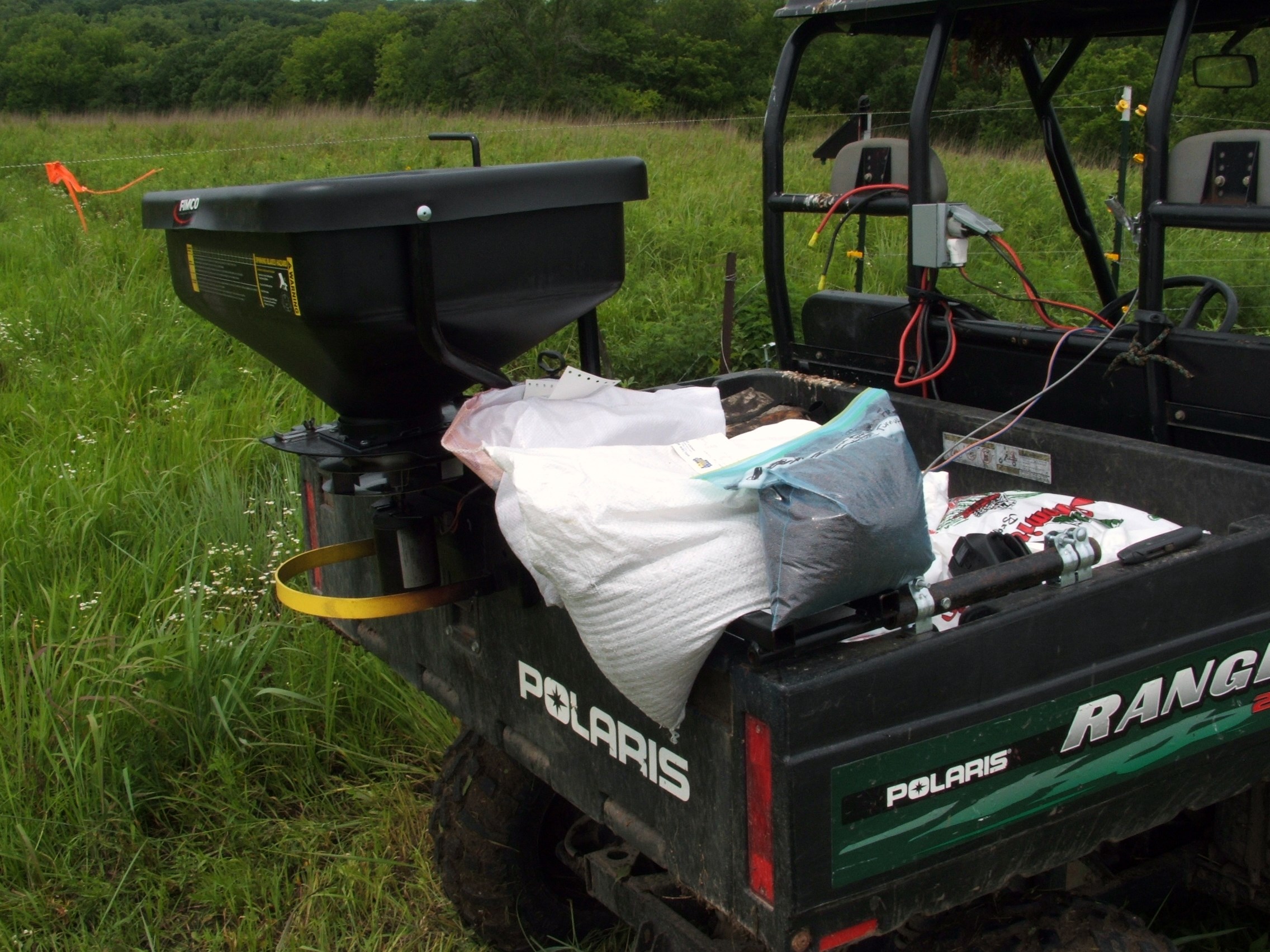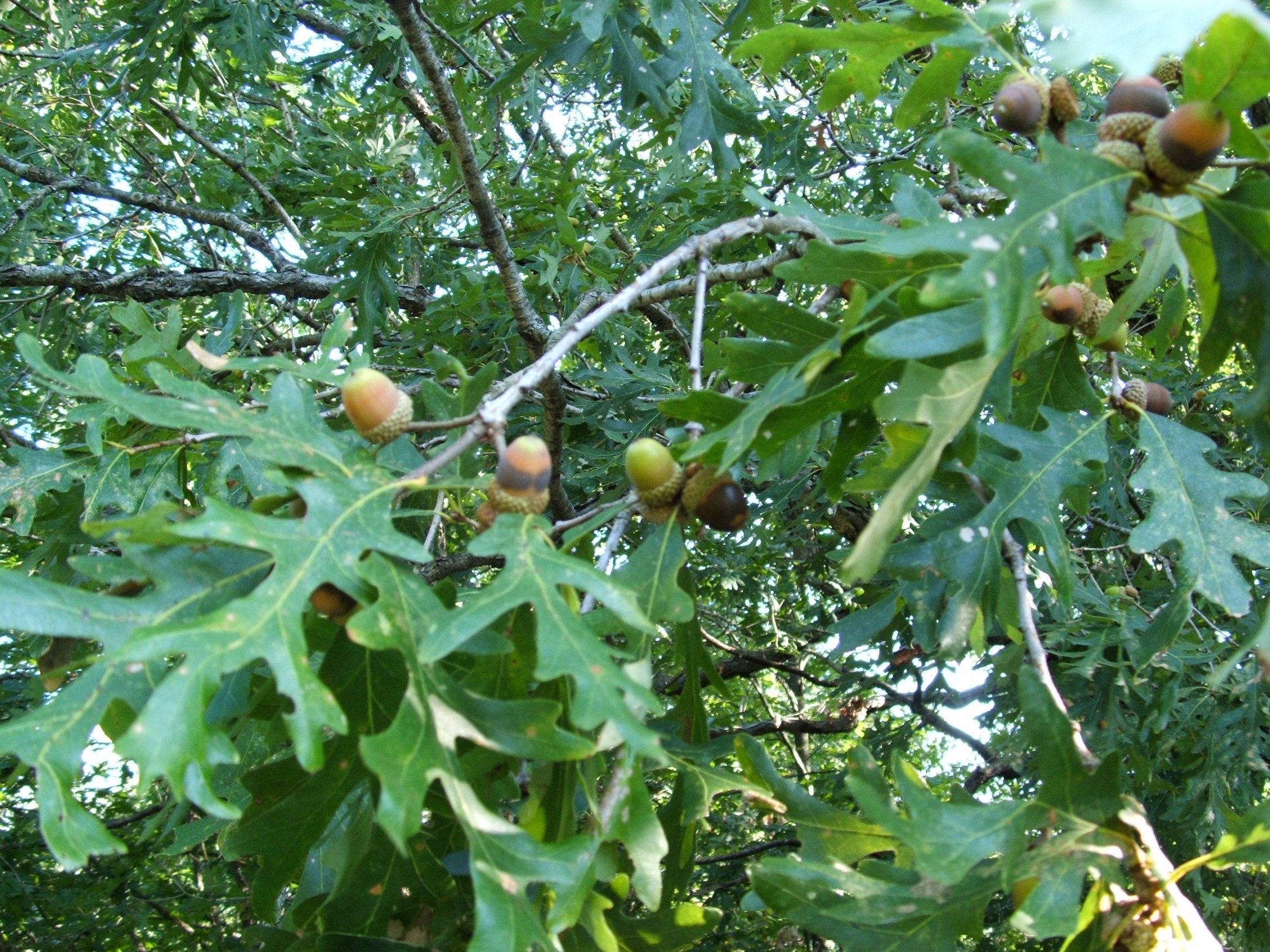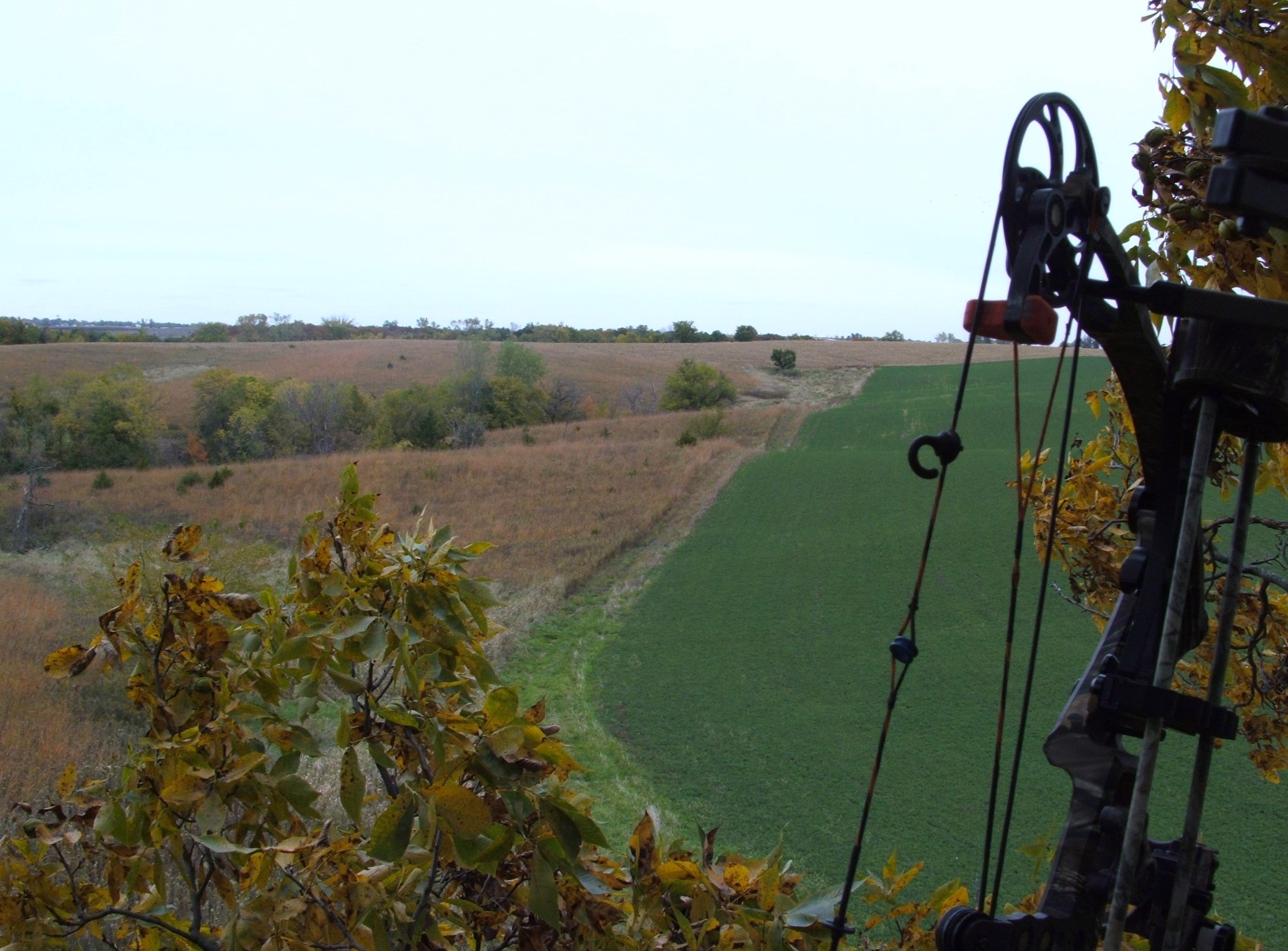Hunt 365-October-Planning for a Better Hunt using a Log Book (A version of this article is published in the October 2017 issue of Iowa Sportsman Magazine)
My hunting season never ends. On the last day of each whitetail season, I am already planning and acting on those plans in preparation for next season. It’s my passion and it will likely always be that way. Those who know me and know me well can tell you that hardly a day goes by that I’m not a student of the whitetail deer. Even on a fishing trip, somehow the camp fire banter always gets a fair dosing of whitetail talk. In more recent years, my efforts more and more seem to be aimed at making others around me successful with their hunts. I get so much satisfaction out of others being successful on one of my farms that in many ways I often say that I am living vicariously through other hunters. Their success if my reward. This might sound crazy to some, but it has been my progression in my whitetail hunting experience. I don’t know who’s happier when a good friend or family member takes their largest or maybe oldest buck on a set that I planned and prepared for them. Sharing the planning/work/and then hunt with them is the most rewarding.
And so it is once again, that whitetail hunters all across the country are taking to the field. Many with high hopes that this is the year they harvest their first buck. Some might be hoping for their first mature buck…or something they can get a shoulder mount of. Whatever your goals are for this fall, you should be starting to plan for and be strategizing about next season. Why? Because the biggest learning tool we have in our quest to become better hunters is by learning from our mistakes, and noting our successes while they happen. If we can correct our mistakes, and repeat what works season after season, our hunts will get better and better over time. This is really the key if you want to one day be the hunter that has the goal of taking not their first big deer, but maybe their 5th…or 10th! However, the key to making next year’s hunt better than this year’s is remembering what went right and what went wrong. This way, you can start to eliminate your mistakes and expand on what is working. I’ve found there’s no better way of documenting these solutions than to have a hunting log!
Logging!
There was a time when I would log almost everything I did on any farm I hunted. In the spring, I would make food plot maps of every plot, when they were planted, what kind of fertilizer I used, moisture levels, how much rain the plots got. I would document anything I thought was pertinent. If I planted soybeans, I would log the variety and maturity class or category so I would retain that information for future years. I would keep this log updated throughout the season so when it came time for hunting season, I could document what worked and what didn’t. What did the deer prefer? What plants performed during wet years and drought years? What food plots worked well when other farm crops were also available? What time of the year did a certain food plot attract the most deer?

I always log my food plotting…things like variety, time planted, amount of rain, did the deer actually use it…etc. so that I don’t forget what works and what doesn’t. Repeat what works and abandon what doesn’t.
Once hunting season came around, I would log every time I would hunt with details of the hunt that I thought were important. Wind direction and speed was documented…and along with that did the wind direction and speed affect how my scent blew out over a valley or ridge? Was the wind constant at my stand or swirling? Did deer get down wind of me? What direction or travel pattern did the deer take that I did see? Other human activity (hunting pressure) from neighbors or hunting partners sharing the same farm was documented. Were some stand locations better during certain times of the year or times of the day? I often make notes like “remember to remove the box elder in east shooting land” so that I wouldn’t forget to take care of this in the off season. Did I bump deer getting into my stand or after the hunt? Every interaction I ever had with any deer was documented, whether it was a fawn or a mature buck. Bedding, eating, traveling, rut characteristics, were all things I didn’t want to forget. A hunting log need not be a scientific data collection that takes hundreds of hours to process and decode…but rather a way to force you to document and think about how your hunt is going and why it was successful or failed. If it was successful, we can try to repeat what made it successful. If things aren’t going well, we can try to figure out why so that we either fix the problems or abandon what we are doing. My log book was always kept in my pack that I carried to every hunt and had throughout the season. During the hunting season, I would make entries in the log almost every time I hunted…while I was hunting.

It is a good idea to document things that will change how you hunt your hunting grounds. Preferred food sources, seasonal changes…so that you don’t forget.
The notes and entries into my log book is what I used the following year in developing my new strategies. If there were issues with a certain stand location with swirling winds, I would try to figure out why and under what conditions. For example, I had one spot on a 400 acre farm I used to hunt that was both an inside corner and a funnel between two larger blocks or timber. The only negative thing was that the wind would swirl badly if the wind speed was anything more than a breeze. The stand was on a side hill and in only a couple of sits I figured out the problem. The final log entry for this spot was literally “only sit Hang and Hunt stand with calm west winds”. Earlier entries were about stronger westerly winds…swirling winds…deer busting me with their nose! Hang and Hunt was the name I had given to this spot. I killed my biggest buck to date from that stand on a misting morning with a calm west wind. Sure, I didn’t need a log book to figure this out…but those entries got me to thinking about other stands I had in similar situations that I would have to adapt to.
I had another stand location that was nickname “Gut Shot” of which the details of the name I won’t go into! Anyhow, this stand got moved 4 times over 4 years, all within 50 yards of each other, because of observed deer behavior. It took that many tweaks to get it perfect, or so I thought before my ultimate decision was to abandon the spot all together because it was impossible to get to without bumping deer, deer getting down wind while on stand, and unpredictable deer movement while on stand. My personal log over those years told me there were just too many issues that I couldn’t solve with that location. Did I need a log to make this decision…probably not! But the log forced me to examine what was going on so that I wouldn’t repeat the mistakes I made at this stand with other stands in the future. In these two examples I was forced to document mistakes I was making at each stand location. When I corrected the mistakes I was able to apply the new working strategies in other similar locations.
I went into my log documenting with the assumption that I would be able to put together a full proof plan about big buck movement based on weather, moon, wind direction, time of year, etc. that would lead me to success based on indisputable evidence about deer patterning. I was mostly wrong! But what it did do was give me a list of off season jobs to perform so that mistakes wouldn’t be repeated year after year and I could repeat those things that worked.
Building off Success and Failure!
When things come together, and you have deer in range whether you choose to harvest them or not, make note of what is happening. If you’re seeing deer but they aren’t in range, make note of that as well so if the pattern repeats itself you are able to move in to take advantage of your observations. If you have food plots that attract and hold deer…make note of what you did. If those same food plots are un-huntable because you are constantly bumping deer going to and from them…make corrections. Today, virtually every stand location I have (or trap as I sometimes call them) is there because I’m building off a past success someplace else. They are tweaked in a manner most likely because of failures I’ve had on previous hunts. And, just as importantly, there are parts of my farm that are not hunted at all because of lessons I have learned (mistakes) that I have vowed not to repeat. If you can eliminate things going wrong, the chances of things going right start to increase dramatically. When it all comes together, I want to repeat those positive scenarios wherever I can. This doesn’t happen overnight and can take you years of experience…but you will only get better if you are willing to makes changes to how you prepare and execute your hunt. If you are largely doing what you did ten years ago, with the same poor results, you shouldn’t be wondering what you’re doing wrong!
Getting Started
Your log doesn’t need to be nearly as extensive as mine once was. For documenting food plot success or failure, I only document these things: DATE PLANTED, DATE SPRAYED, VARIETY, FERTILIZER USED, MOISTURE LEVEL AT PLANTING, RAIN RECEIVED DURING GROWING, ATTRACTIVENESS, TIME OF YEAR DEER USED PLOT, HUNTABILITY, FOOD AVAILABILITY DURING HUNTING SEASON, ACCESS FOR HUNTING (EXIT AND ENTRANCE), HOW LONG DID THE PLOT LAST.

Unless you have a photographic memory, you will forget details that will help you on future hunts. Documenting your hunts and reviewing them can and will help you if you take the time to study your hunts for future success.
For daily log entries while on stand, my logs today are not as extensive as they once were either. This is mainly due to some findings being etching into stone on my brain. But your log should include at least the following entries: DATE, ACTUAL TIME ON STAND, STAND COMFORT LEVEL, WIND DIRECTION, WIND CONSISTENCY, DEER OBSERVED WITH TIME AND WHAT THEY DID, SHOOTING LANES, SAFETY OF STAND, ENTRANCE AND EXIT (were deer bumped), IS THE STAND QUIET, CAN THE STAND BE ACCESSED QUIETLY (does it have or need a trail to it), ARE DEER GETTING DOWN WIND, ARE DEER IN RANGE, IS THE STAND FOOD SOURCE DEPENDANT (cash crops, food plots, acorns, etc.). Make sure to document any other findings you feel are relevant that you don’t want to forget. Use your log entries as a way to force yourself to make in field and in season evaluations of how your hunt is going. At the back of your log, it is a good idea to keep a running to do list for next year.
It is now October and the season is on! If you want next year’s season to be better than this one, start right now in becoming a student of the whitetail deer. Instead of spending time on stand deciding what new full proof gadget to buy (sarcasm intended), sit back and observe; study your surroundings. I have found that throughout my whitetail hunting career, what has helped me the most is observing what works and what doesn’t. Creating a hunting log book can be a good start for any hunter in identifying corrections and improvements in season, and in preparing for next year!
